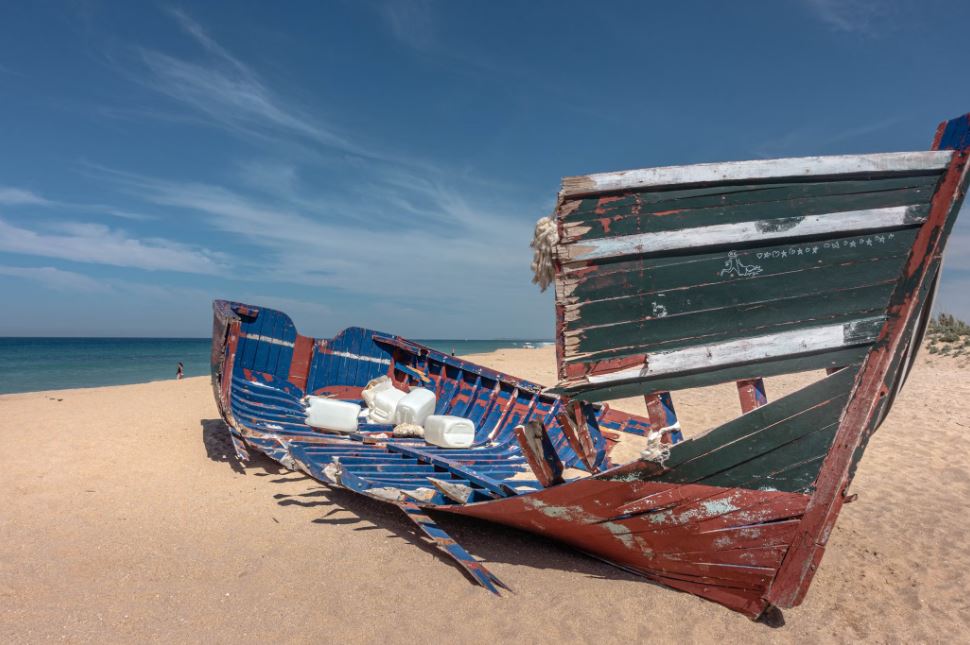According to the most recent estimates, modern slavery affects nearly 50 million people annually, which is not limited to one region, country or political system. The compounding crises, including the COVID-19 pandemic, conflicts, rising inequalities and environmental degradation, have exacerbated modern slavery and other forms of exploitation in recent years.
Estimated vulnerability to modern slavery by country
Modern slavery – an umbrella term – denotes a form of acute exploitation of a person that involves some form of deceit, coercion or use of force for gain, usually financial. These practices range from forced labour, and debt bondage to human trafficking and forced marriage.
According to the most recent Global Estimates Report (2022), the demographic of victims of modern slavery vary, and so do the countries and regions where it is most prevalent, making modern slavery a global phenomenon that affects virtually every corner of the globe. This has further implications for realising sustainable development for all.
Why does modern slavery persist?
There are multiple ‘push’ and ‘pull’ factors for modern slavery, including poverty, unstable political situation, widespread human rights violations or persecution that push people to look for better opportunities elsewhere. Higher wages, labour shortages or a more stable political situation pull people towards ‘opportunities’ that might not be what they initially seem, placing them in even more precarious situations and increasing their susceptibility to exploitation and abuse.
These circumstances, combined with natural and human-made disasters causing an influx in migratory movements and displacement, create ripe conditions for exploitation and modern slavery to thrive.
Refugees and asylum seekers, like everyone else, have human rights that need to be upheld by states under which jurisdiction they find themselves.Despite global efforts to tackle modern slavery, including proliferating legislation worldwide to outlaw its different forms, modern slavery is fuelled by relatively low prosecution rates and high rewards. The International Labour Organization (ILO)’s current estimates indicate that forced labour alone generates profits of US$256 billion a year; translating to some US$10,000 profit per victim. As modern slavery is largely a clandestine practice, the real figure is likely much higher.
Regrettably, modern slavery is a relatively high-gain and low-risk endeavour for perpetrators, as the chances of detection and prosecution are often minimal compared to the substantial profits derived from exploiting vulnerable individuals.
What makes refugees and asylum seekers prone to exploitation?
The United Nations (UN) estimates that in mid-2020 3.5% of the global population was on the move. There are different motivations for why people migrate, some do it in search of employment or cultural enrichment, but many migrate out of necessity to escape conflicts or in response to climate change.
According to the UN Refugee Agency (UNHCR), by the end of 2022, 108.4 million people were forcibly displaced as refugees, asylum seekers or internally displaced people (IDPs). Not only does it mean that 1 in every 74 people worldwide was forced to flee, but it also shows a steady increase year on year since 2012. This is a worrying trend, in particular when migratory routes are dangerous and those on the move, especially if they have unsettled status, experience a myriad of violence and abuse.
People forced to flee worldwide (2012–2022)
Source: UNHCR Refugee Data Finder
There are multiple reasons ‘why’ and ‘how’ refugees and asylum seekers become vulnerable to exploitation and modern slavery, including:
- Even if they find themselves in ‘safe’ countries, refugees and asylum seekers often lack legal status and access to formal employment. This legal limbo forces many into informal labour markets where protections are minimal and exploitation is rampant.
- They often find themselves in economic desperation that can make them more susceptible to accepting exploitative work conditions or falling victim to traffickers who promise better opportunities.
- In some regions, weak law enforcement and corruption can exacerbate the risks of exploitation and modern slavery, as authorities may be complicit or ineffective in protecting vulnerable populations.
- The trauma experienced by refugees and asylum seekers from conflict, persecution and displacement can impact their ability to make informed decisions and recognise exploitative situations.
Interconnectedness between rights and responsibilities
Refugees and asylum seekers, like everyone else, have human rights that need to be upheld by states under which jurisdiction they find themselves. The landmark New York Declaration for Refugees and Migrants, unanimously adopted by the UN General Assembly on 19 September 2016, recognises the vulnerability of refugees and migrants and sets international minimum standards for their fair and equitable treatment. Nevertheless, national migration laws and migration and asylum policies often exacerbate exploitation risks by increasing the vulnerability of a growing number of people worldwide.
The recently passed Illegal Migration Act of 2023 (UK) is one such example. The Act seeks to remove everyone who arrived in the United Kingdom irregularly by streamlining the removal process for so-called ‘illegal’ migrants, including potential refugees and asylum seekers, and deter future irregular migration through stringent legal and procedural changes. In practical terms, as has been widely argued, it will have significant implications for victims of modern slavery by denying them protections and support they are already entitled to under other pieces of national legislation which, in turn, will increase their susceptibility to modern slavery and other forms of exploitation.
Those escaping peril often face exploitation because of the vulnerability caused by their situation and the lack of protection and support from authorities in places where they seek refuge. Rights come with responsibilities placed on the duty holders which requires coordinated efforts to safeguard the rights and well-being of refugees and asylum seekers, including addressing their vulnerability to exploitation and modern slavery.
 Click on the banner to view other Refugee Week materials
Click on the banner to view other Refugee Week materials







Rate and Review
Rate this article
Review this article
Log into OpenLearn to leave reviews and join in the conversation.
Article reviews